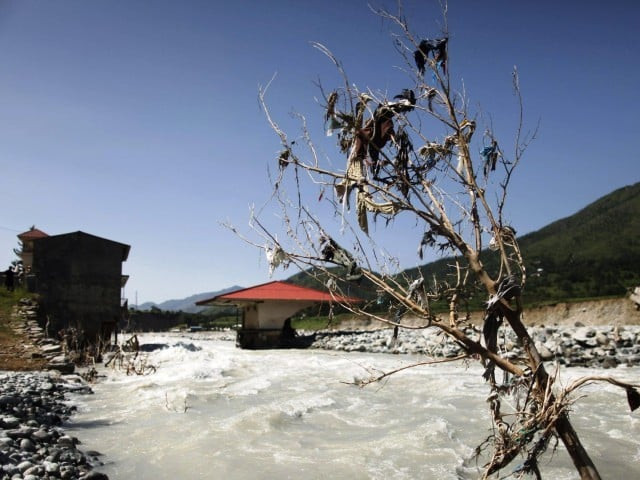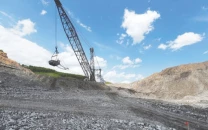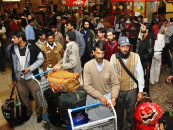Where the cracks show: Southern parts of K-P more vulnerable to climate change
Karak, DI Khan and north-western districts of Upper and Lower Dir also at risk

The southern parts of Khyber-Pakhtunkhwa (K-P) are particularly vulnerable to the impacts of climate change.
Asfar Khan, the deputy director of the province’s new Climate Change Cell, told The Express Tribune on Thursday the areas which are most likely to experience a drastic change of climate include Karak and DI Khan as well as the north-western areas of Upper and Lower Dir.
The deputy director said there has been a substantial reduction in rainfall and ground water. “This is likely to adversely affect food security, livestock production and environmental and natural resources in the area,” he added.

The deputy director claimed K-P has not experienced severe droughts in recent years. “The province has two seasons of rainfalls,” he added. “If there is no rain during the kharif season, there is always rain in the rabbi season to balance it out.”
However, the southern region of the province is predominantly arid and does not receive significant rainfall. “Moreover, there is higher solar radiation in the southern parts of K-P,” said Khan.
Domino effect
The deputy director said the cell carefully studied changing patterns of rainfall in Upper Dir, Lower Dir and Karak. The environmental body is also in the process of collecting detailed data on the actual impact of climate change. “We have come to the conclusion these areas will experience a severe water shortage for agricultural purposes over the next few years,” he said.
Khan added the sowing season of the wheat crop begins on November 17. However, the pattern of rainfall has changed drastically and is likely to create a wheat shortage. “If farmers delay the crop due to the rains, it would surely impact its quality,” the deputy director said.
Agricultural scientists must be prepared to tackle these challenges to ensure food security is not compromised, he added. “We have to provide maximum guidelines to all stakeholders,” said Khan. “They have to devise a strategy to cope witn these changes.”
According to Khan, the new cell is formulating a climate change policy for the entire province. “Since the cell became operational in June, we have been closely examining the impact of climate change on K-P,” said Khan.
Challenges and solutions
The new cell was established by the Khyber-Pakhtunkhwa Environmental Protection Agency (EPA) in June 2014. K-P is the first province to have introduced a climate change cell.

The purpose of the cell is to assess the impact of climate change on the province and examine the multilateral agreements which Pakistan has signed. However, there are still a series of challenges which need to be addressed.
The last environmental profile of the province was conducted in 2009 by the EPA conducted. Since then, the agency has failed to update information to create a more current environmental profile.
According to the agency, it has discussed the matter with various agriculture scientists and environmentalists. They have emphasised on the construction of dams to store water for both agricultural and drinking purposes.
Moreover, agriculture scientists in the province are trying to develop strategies to prevent the likelihood of drought in the province.
Published in The Express Tribune, December 5th, 2014.













COMMENTS
Comments are moderated and generally will be posted if they are on-topic and not abusive.
For more information, please see our Comments FAQ